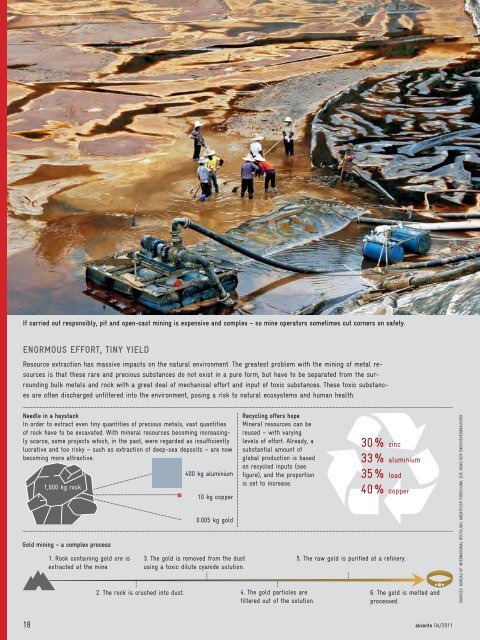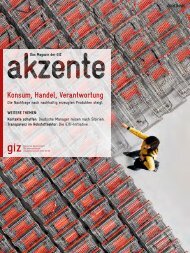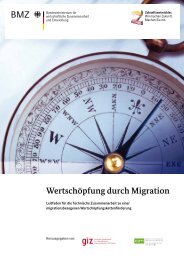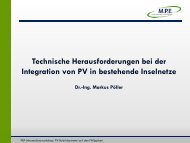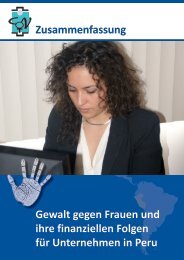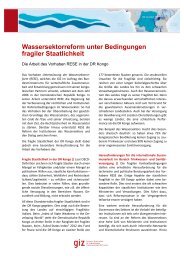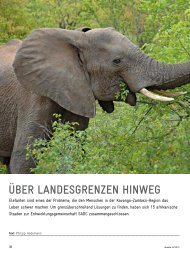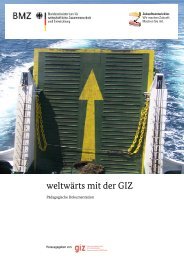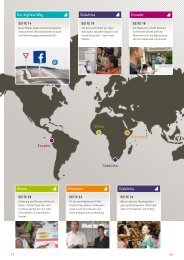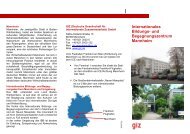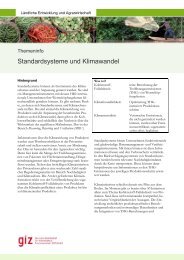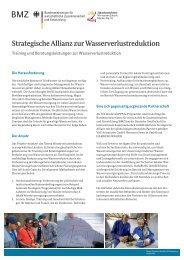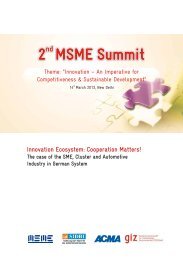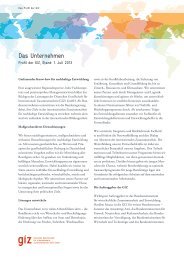Complete issue (pdf, 7520.08 MB, EN) - GIZ
Complete issue (pdf, 7520.08 MB, EN) - GIZ
Complete issue (pdf, 7520.08 MB, EN) - GIZ
You also want an ePaper? Increase the reach of your titles
YUMPU automatically turns print PDFs into web optimized ePapers that Google loves.
akzeNTUIerT<br />
If carried out responsibly, pit and open-cast mining is expensive and complex – so mine operators sometimes cut corners on safety.<br />
eNOrmOUS eFFOrT, TINy yIeld<br />
Resource extraction has massive impacts on the natural environment. The greatest problem with the mining of metal resources<br />
is that these rare and precious substances do not exist in a pure form, but have to be separated from the surrounding<br />
bulk metals and rock with a great deal of mechanical effort and input of toxic substances. These toxic substances<br />
are often discharged unfiltered into the environment, posing a risk to natural ecosystems and human health.<br />
Needle in a haystack recycling offers hope<br />
In order to extract even tiny quantities of precious metals, vast quantities<br />
of rock have to be excavated. With mineral resources becoming increasingly<br />
scarce, some projects which, in the past, were regarded as insufficiently<br />
lucrative and too risky – such as extraction of deepsea deposits – are now<br />
becoming more attractive.<br />
Gold mining – a complex process<br />
18<br />
1,000 kg rock<br />
1. Rock containing gold ore is<br />
extracted at the mine.<br />
400 kg aluminium<br />
10 kg copper<br />
0.005 kg gold<br />
3. The gold is removed from the dust<br />
using a toxic dilute cyanide solution.<br />
Mineral resources can be<br />
reused – with varying<br />
levels of effort. Already, a<br />
substantial amount of<br />
global production is based<br />
on recycled inputs (see<br />
figure), and the proportion<br />
is set to increase.<br />
30 % zinc<br />
33 % aluminium<br />
35 % lead<br />
40 % copper<br />
5. The raw gold is purified at a refinery.<br />
2. The rock is crushed into dust. 4. The gold particles are<br />
6. The gold is melted and<br />
filtered out of the solution.<br />
processed.<br />
akzente 04/2011<br />
SOURCES: BUREAU OF INTERNATIONAL RECYCLING; AB<strong>EN</strong>TEUER FORSChUNG, ZDF; BUND DER <strong>EN</strong>ERGIEVERBRAUChER


